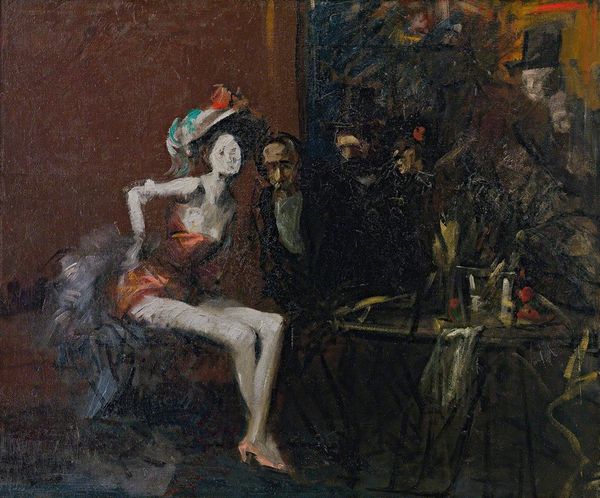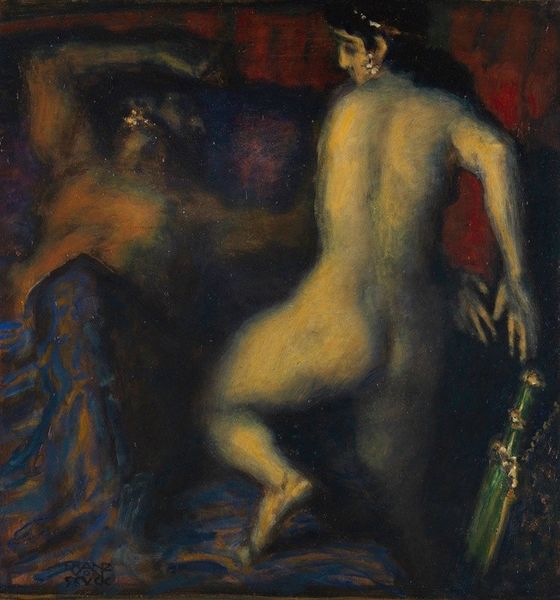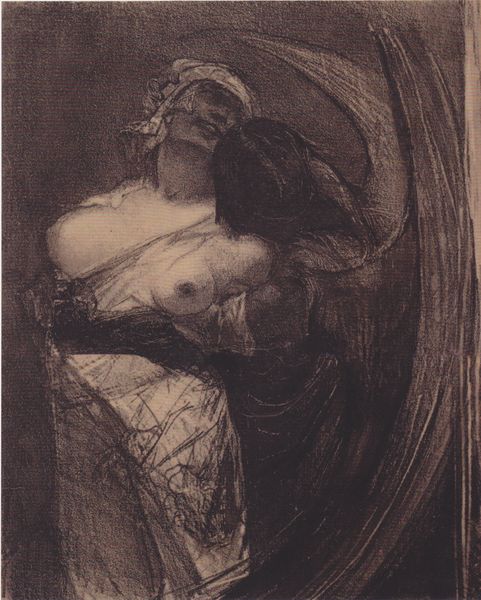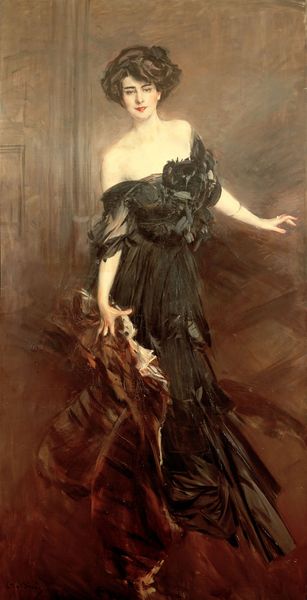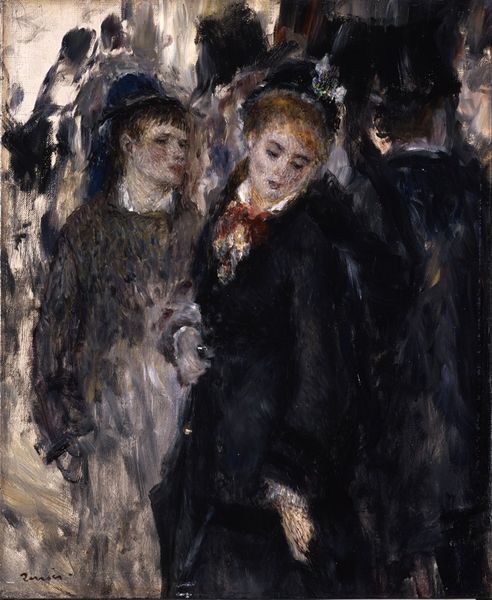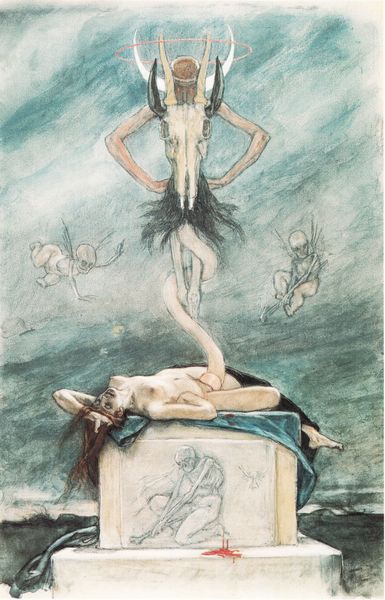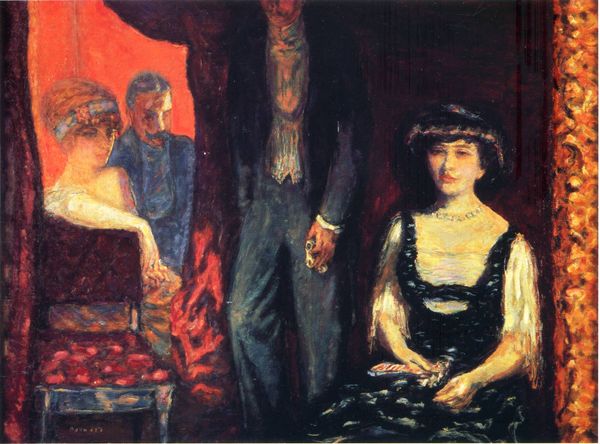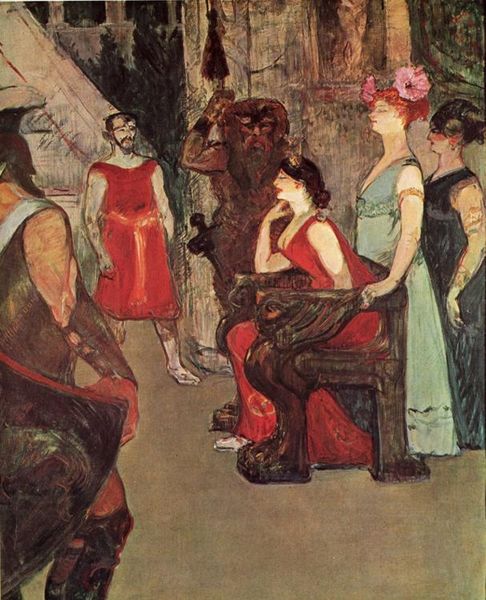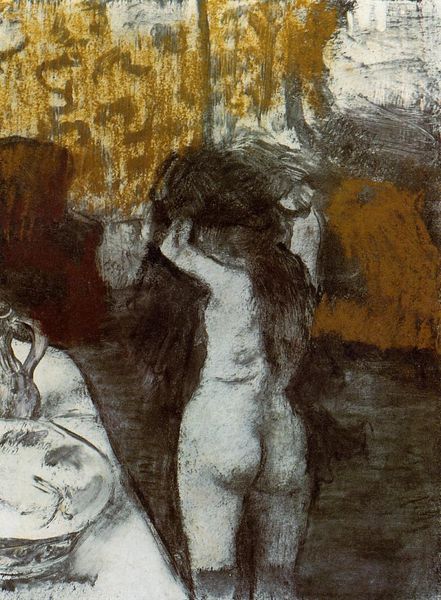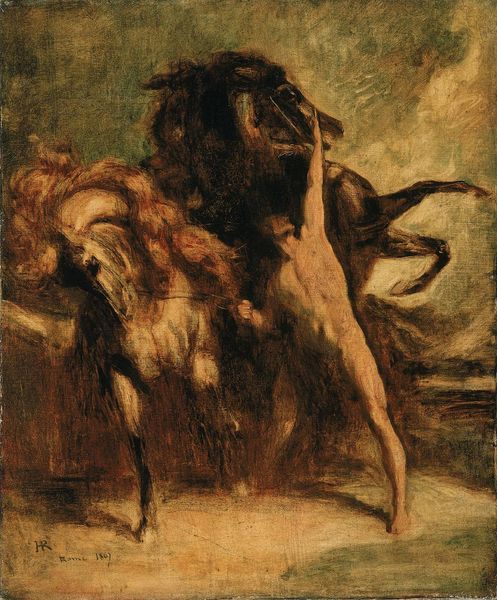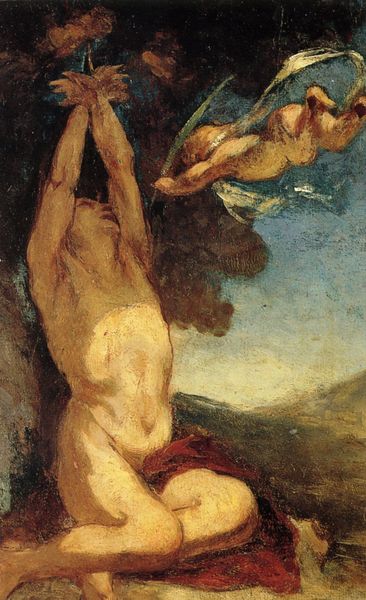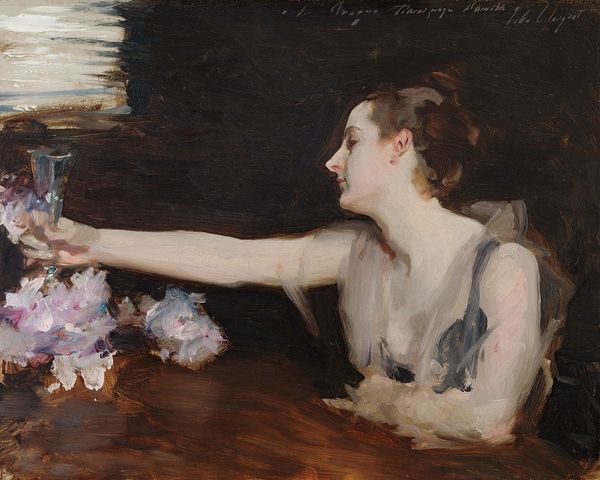
Messaline (between two extras) 1901
0:00
0:00
henridetoulouselautrec
E.G. Bührle Foundation, Zürich, Switzerland
Dimensions: 92.5 x 68 cm
Copyright: Public domain
Curator: Henri de Toulouse-Lautrec's “Messaline (between two extras),” painted in 1901, presents a striking figure against a blurred backdrop. I find myself immediately drawn to the woman's melancholic pose and shadowy eyes, even amid a bustling theater. Editor: It's the bold strokes of color, particularly the deep reds and blacks, that truly seize attention. Note how the artist deftly balances the formal wear and ambiguous architecture; this careful approach draws our eye straight to the composition and tonality of the canvas itself. Curator: While the color palette is engaging, I am more invested in understanding the work through the identity of the central figure: a known actress presented on the edges of respectability and class, seemingly pushed away. Look at the composition and how that isolates her, it speaks volumes about the cultural realities that dictated the limited freedoms of Parisian women in this period. Editor: That context surely informs the reading, yet isn't there an intrinsic tension within Lautrec’s technique? The way he renders shape, creating flat planes and simplified contours, offers a structure that supersedes thematic concerns. We see this echoed through Symbolist poetry as well. The figure is just as much an excuse for pure formalism. Curator: I don't necessarily see the figure as an “excuse,” but that it presents a window onto this reality—Paris as a theatrical backdrop in which the realities of class and gender placed performers in compromised social situations. These women straddled the line between spectacle and subjection, and Lautrec was keenly aware of that dynamic. Editor: I am particularly interested in how the brushwork achieves movement while staying true to form. See the dress, its elegance conveyed solely through gestural markings—it exemplifies Lautrec's adeptness. Its abstraction teases out this unique interplay, no? Curator: Certainly. But I see these stylistic details more as a way of representing the anxiety inherent within performances, public perceptions and constraints upon performers themselves. In many ways, Messaline embodies their struggle to maintain power within strict societal confines. Editor: Ultimately, it's the enduring dialogue between technique and cultural context that grants "Messaline" its continued captivation and lasting effect upon observers. Curator: Absolutely, an enduring dialogue that keeps revealing profound truths about identity, power, and art's ability to reflect complex intersections.
Comments
No comments
Be the first to comment and join the conversation on the ultimate creative platform.
